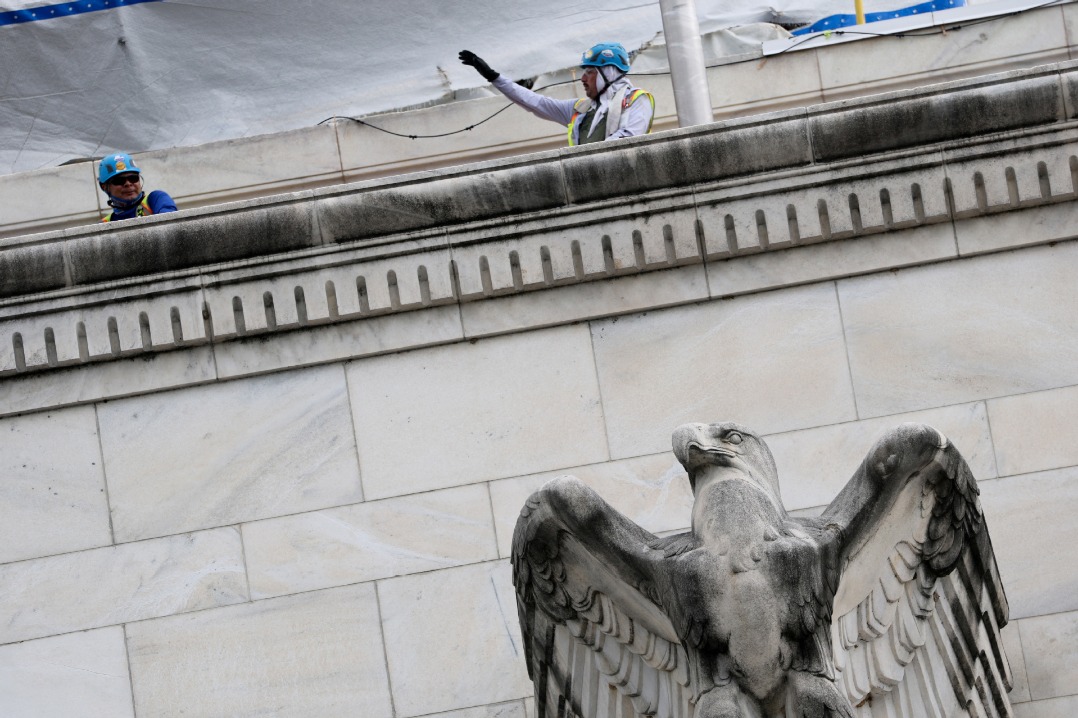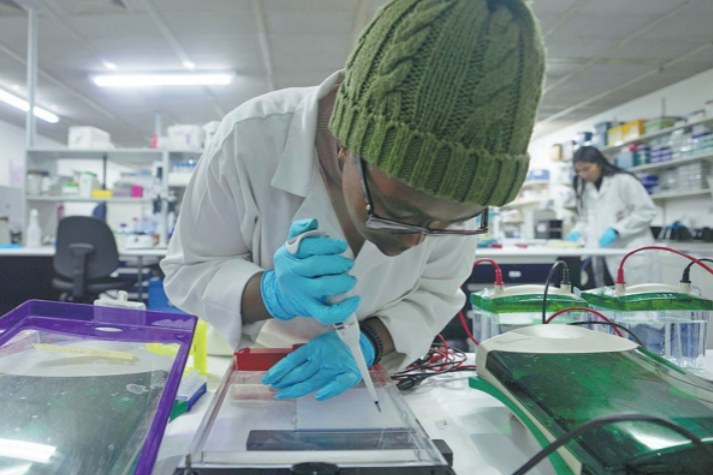Early Omicron find in US raises doubts


Strain detected in New York wastewater days before South Africa announcement
The Omicron variant of the coronavirus was detected in New York City's wastewater days before it was officially announced in South Africa and a week before the first case was confirmed in the United States, according to a report by the Centers for Disease Control and Prevention.
The findings from a CDC report in January showed that a resident of New York likely had the highly transmissible Omicron variant four days before South Africa declared it of concern to the international community on Nov 25. It also was found in the city's wastewater 10 days before the US reported its first confirmed case of Omicron on Dec 1.
Wastewater data provides valuable information about the spread of the coronavirus because those who are infected shed it in their feces.
Scientists collect samples from wastewater, which are sent to a laboratory for sequencing to determine the levels of the virus in a community or city. They may see new mutations of the virus often before clinical diagnosis or cases are confirmed.
John Dennehy, a professor of biology at Queens College of the City University of New York, researches virus evolution, ecology and emerging viruses in new host populations.
Dennehy told China Daily: "Monitoring SARS-CoV-2 is an effective means of determining the level of COVID-19 circulating in a city. In cities with sewers, everyone contributes to the wastewater, thus wastewater provides an unbiased snapshot of SARS-CoV-2 prevalence. By contrast, estimating prevalence through positive PCR tests may miss infected individuals who do not see medical attention or test at home."
Since mid-2020, Dennehy has been a part of a team of scientists that have been monitoring New York City's wastewater each week for levels of the coronavirus.
On Nov 21, the team collected a sample from the city's wastewater and sent it for sequencing to find viruses two days later.
In December, when the results came back, they "immediately recognized" a new variant's distinct mutations as Omicron, just as it had become international news.
"There was a gap between when we collected the wastewater sample and when we received the sequencing data," Dennehy explained. "When we received the sequencing data, the Omicron variant had just appeared in the news, and we immediately recognized Omicron's presence in New York City.
"Although Omicron clearly arose in Africa, this finding suggests that there was community spread of Omicron at the time of sampling."
The other scientists involved in the data collection were Marc Johnson at the University of Missouri, Monica Trujillo from Queensborough Community College and Davida Smyth at Texas A&M University.
The CDC's study of Omicron in New York's wastewater does not provide concrete evidence that the variant was there before it was found elsewhere, and while the mutations were present, the variant was fragmented and may not have been all on the same genome, The New York Times reported.
However, in November, researchers in California and Texas found traces of the Omicron variant in local wastewater, suggesting it was present there too before it was widely known.
Alexandria Boehm, an environmental engineer at Stanford University and an author of the CDC study, used PCR tests capable of detecting Omicron's specific mutation.
She got hits for Omicron's specific mutation from two samples collected in California, on Nov 25 in Merced and Nov 30 in Sacramento.
Surge in cases
From December 2021, the US experienced a surge in Omicron cases that sent people rushing out to buy PCR tests, which increased the strain on hospitals.
In January, the CDC estimated that 99.5 percent of all COVID-19 cases were from the Omicron variant. But it was deemed less likely than the Delta variant to cause serious illness.
On Feb 16, CDC Director Rochelle Walensky said during a White House press briefing that Omicron cases were declining.
As of Monday, over 935,300 deaths in the US were caused by COVID-19, according to Johns Hopkins University, an average of 2,200 deaths a day.
Last year, shortly after South Africa announced that it had discovered the Omicron variant, the European Union, Israel, Singapore, Great Britain and the United States banned all travel from the nation.
Non-US citizens from eight neighboring African countries-Botswana, Eswatini, Lesotho, Malawi, Mozambique, Namibia and Zimbabwe-also were banned from travel.
The travel ban came under fire from United Nations Secretary-General Antonio Guterres, who described it as "travel apartheid". It also was criticized by South Africa President Cyril Ramaphosa.
The US lifted its travel ban on Dec 24, after Omicron cases began surging at home and worldwide.
Now, as cases of Omicron wane in the US, the CDC said it still has several measures in place to monitor whether levels of the virus are rising or falling in communities nationwide.
One measure is monitoring wastewater. At least 400 testing sites in 212 communities around the country are conducting wastewater surveillance. The testing sites will expand to 800 in the next four weeks.
In February, the CDC began posting the information online.
"Testing in wastewater or our sewage systems can … provide an early warning of increased COVID-19 cases to help communities prepare," Walensky said in a White House press briefing on Feb 9.

































